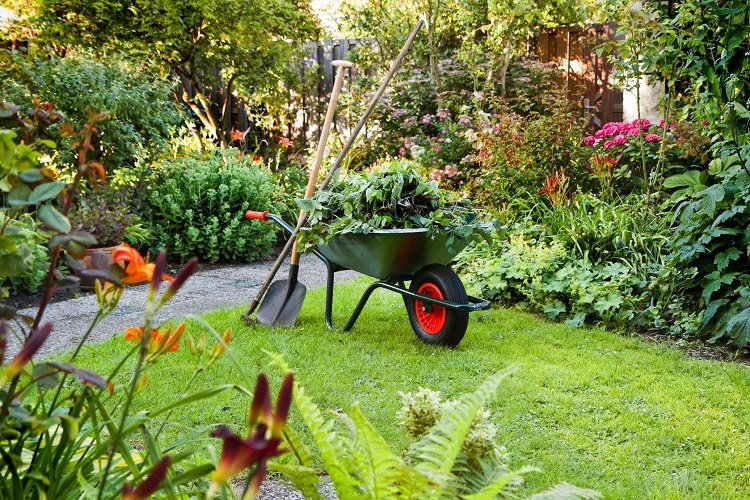How to Prepare Your Garden for Spring Planting

As the winter chill begins to thaw, the promise of spring stirs excitement in every gardener's heart. Imagine your garden as a blank canvas, ready to be transformed into a vibrant masterpiece. But before you dive into planting, there's some essential groundwork to be done. Let's explore how to prepare your garden for spring planting, ensuring a blooming success story.
Spring Garden Preparation: Where to Begin?
Preparing your garden for spring planting is like setting the stage for a grand performance. The better the preparation, the more spectacular the show. So, where do you start?
Survey Your Garden
Take a stroll through your garden. What does it tell you? Look for signs of life, damage from winter, and areas that need attention. This survey will guide your next steps.
Clean Up the Clutter
Winter leaves behind a mess—literally. Dead leaves, broken branches, and leftover debris need to be cleared. Think of it as a garden detox, removing the old to make way for the new.
Soil Preparation: The Foundation of Your Garden
The health of your soil is the cornerstone of a thriving garden. Here’s how to give it the TLC it deserves.
Test Your Soil
Before you start digging, test your soil. Knowing its pH and nutrient levels will help you understand what amendments it needs. You can use a home testing kit or send a sample to a local cooperative extension service.
Enrich the Soil
Once you know what your soil needs, it's time to enrich it. Compost is a gardener's best friend. It adds organic matter, improves soil structure, and boosts nutrient levels. Spread a layer of compost over your garden beds and work it into the soil.
Till or No-Till?
Tilling can help break up compacted soil and incorporate amendments. However, it can also disrupt the soil's natural structure and beneficial microorganisms. Consider a no-till approach if your soil is in good condition. Simply add a layer of compost or mulch on top.
Pruning Tips: Shape Up Your Plants
Pruning is like giving your plants a haircut. It encourages new growth, improves plant health, and enhances the overall appearance of your garden.
When to Prune
Late winter to early spring is the ideal time to prune most deciduous trees and shrubs. This is when they are dormant, and pruning won't stimulate new growth that could be damaged by frost.
How to Prune
Start by removing any dead, diseased, or damaged branches. Then, focus on shaping the plant. Make clean cuts just above a bud or branch. For larger branches, use a three-cut method to prevent tearing.
Planting Guide: What to Plant and When
Spring is the perfect time to introduce new plants to your garden. But timing is everything. Here’s a simple planting guide to help you out.
Cool-Season Vegetables
Plant these as soon as the soil is workable. Examples include spinach, lettuce, peas, and radishes. They thrive in cooler temperatures and can be harvested before the heat of summer sets in.
Warm-Season Vegetables
Wait until the danger of frost has passed before planting these. Tomatoes, peppers, cucumbers, and beans are all warm-season crops that love the sun.
Flowers and Ornamentals
Spring is the time to plant annuals and perennials. Annuals like marigolds and petunias add instant color, while perennials like daylilies and hostas will return year after year.
Garden Maintenance: Keeping Things in Tip-Top Shape
Regular maintenance is key to a healthy, beautiful garden. Here are some tips to keep your garden looking its best.
Water Wisely
Water deeply and less frequently to encourage deep root growth. Aim for about an inch of water per week, either from rainfall or irrigation.
Mulch Matters
Mulch helps retain moisture, suppresses weeds, and regulates soil temperature. Apply a 2-3 inch layer of organic mulch around your plants.
Weed Control
Weeds compete with your plants for water, nutrients, and space. Regular weeding will keep them in check. Pull weeds when they are small and before they set seed.
Conclusion: Embrace the Beauty of Spring
Preparing your garden for spring planting is a labor of love. From surveying your garden to enriching the soil, pruning, and planting, each step brings you closer to a blooming paradise. Remember, gardening is a journey, not a destination. Enjoy the process, and watch as your garden transforms into a vibrant oasis.
FAQs
When is the best time to start preparing my garden for spring?
- The best time to start preparing your garden for spring is in late winter or early spring, as soon as the ground is no longer frozen and is workable.
What are some common mistakes to avoid when preparing my garden for spring?
- Common mistakes include over-tilling the soil, over-watering, and planting too early. It's also important to avoid using too much fertilizer, which can burn plants.
How often should I water my garden in the spring?
- Aim for about an inch of water per week, either from rainfall or irrigation. Water deeply and less frequently to encourage deep root growth.
What are some good plants to start with in the spring?
- Cool-season vegetables like spinach, lettuce, peas, and radishes are great for early spring. For flowers, consider planting annuals like marigolds and petunias, and perennials like daylilies and hostas.
How can I make my garden more eco-friendly?
- Use organic fertilizers and pesticides, compost kitchen scraps, and plant native species that attract beneficial insects and wildlife. Also, consider using a rain barrel to collect water for your garden.


By following these steps and tips, you'll be well on your way to creating a beautiful and thriving spring garden. Happy gardening!
0 Response to "How to Prepare Your Garden for Spring Planting"
Post a Comment